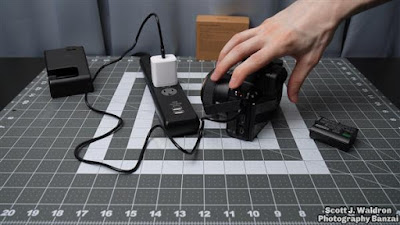I was recently sent a Llano Aurora camera battery, specifically the EN-EL15c model for many Nikon cameras. Keep in mind that Llano sent this battery to me at no cost, but they had to agree to my terms.
Check out the full video on YouTube for more information:
Check out the llano Aurora USB-C EN-EL15C Battery for Nikon cameras:
Amazon: https://amzn.to/3ZLMbtY
ebay: https://ebay.us/L7Lom6
As an affiliate of these shops, I earn from qualifying purchases! It's more about time from the click rather than what you buy. Usually anything within 24 hours of the visit.
The most interesting thing about this battery is that it has a built-in display to show its power level. It also has a slightly increased capacity rating compared to its predecessor and the official Nikon battery. Let's take a look at what it offers. Though, I don't test capacity here so take any mention of capacity with a some level of skepticism. My OEM batteries are a few years old, so I don't think it would be a fair test. Maybe at some point I can do this if there enough requests for it on the YouTube video.
 |
| The Llano Aurora battery features a built-in display to check the charge level at a glance. |
What's included with the battery
The battery arrives in a solid box with good, protective padding inside. Along with the battery itself, Llano includes a USB-C to USB-C cable. It's important to note that it does not come with a USB charger, so you will need to provide your own USB power source if you plan to charge it directly.
 |
| The package includes the Aurora battery, a user manual, and a USB-C charging cable. |
Features that OEM batteries don't have...
The standout feature is the power indicator right on the battery. There is a small fingerprint icon on the middle surface; when you tap it, a series of green LEDs light up to give you an approximate idea of the remaining charge in 25% increments (25%, 50%, 75%, 100%). This is a great convenience feature, as you can quickly check your batteries before heading out for a shoot without having to put each one in the camera.
 |
| LEDs showing that the battery around half charged. The top fingerprint icon is where you tap on the battery for the power meter to activate. |
In addition to the standard charging contacts, the Aurora battery has its own USB-C port. This means you have multiple ways to charge it. You can charge it in the camera, with the official Nikon external charger, or directly with a USB-C cable and a power source. I tried it with my Nikon Z5, and it charges in the camera without any issues.
 |
| The battery supports in-camera charging, as indicated by the orange charging light on the Nikon Z5. |
I also tested it with my official Nikon MH-25a charger, and it appears to work fine.
 |
| The Llano Aurora battery is compatible with the official Nikon MH-25a external charger. |
The flexibility of being able to charge the battery directly via USB-C is a huge plus, especially for travel. If you have a couple of these, you could be charging one in the camera while charging a spare with a power bank or a phone charger. The USB-C input is rated for 5 volts at a maximum of 2 amps.
Expected performance of a new battery.
When it comes to power, the capacity is rated in milliamp-hours (mAh). In simple terms, a higher mAh rating generally means a longer battery life on the same camera.
This specific Llano Aurora battery has a typical rated of 2,600 mAh. For comparison, Llano's previous model was 2,400 mAh, and the official Nikon EN-EL15c battery is rated at 2,280 mAh. On paper, the Aurora offers an increase in capacity.
 |
| A comparison of rated capacity: the Llano Aurora (left) is rated at 2600mAh, while the official Nikon EN-EL15c (right) is 2280mAh. |
While I haven't done a full rundown test on this new battery yet, I can share my experience with their previous 2,400 mAh battery. I used a single one for a full day at a convention, where I took 1,202 photos, and the battery was still at 27% charge. Given that the Aurora has a higher capacity, I would expect its performance to be a little bit better.
A Note on Third-Party Batteries
Of course, this is a third-party battery. Llano claims it is "fully decoded," which means it should communicate seamlessly with the camera, show the correct battery level, and not cause any warning messages. In my testing so far, I haven't run into any issues but the only camera I have to try is the Nikon Z5. It fits well, and the camera recognizes it without a problem. However, as with any third-party accessory, especially batteries, it's a personal choice. If you are comfortable using them, this one seems to give additional benefits compared to the OEM battery and some 3rd party alternatives.
To see the battery in action and get a closer look at all its features, you can watch my full video review on YouTube.